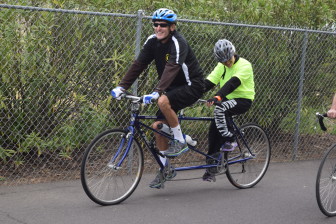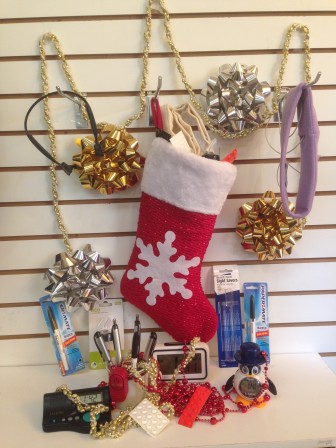The LightHouse believes that attending consumer conventions of the blind can be an empowering tool. Since 2011 we’ve taken students and staff to a number of consumer conventions to maximize and intensify learning in a fun and adventuresome way.
With great excitement, The Lighthouse Youth Program is pleased to announce its first Youth Employment Series (YES) Academy.
Academy Dates: Wednesday, June 22 to Wednesday, July 6, 2016
Deadline to register is May 1
Informational conference call: Sunday, April 10, 4:00 p.m.
During this two week training academy students aged 16 to 24 will gain valuable knowledge and life experiences that will help them become more independent, confident and successful.
During the first week of this intensive program, students will stay at the brand new, state-of-the-art LightHouse headquarters in San Francisco where they will take part in a series of day-long workshops focused on acquiring knowledge about college, employment, blindness skills and self-advocacy.
LightHouse YES Academy Goes to NFB National Convention
During the second week, new skills will be put to the test when the entire academy hits the road and travels across the country to attend the National Federation of the Blind annual National Convention in Orlando, Florida, one of the largest gatherings of blind and low vision individuals and professionals in the world.
Join us for an Informational Conference Call
To learn more about this innovative program, we invite you to join us for a conference call on Sunday, April 10 at 4:00 p.m.
Call-in number: 641-715-3300, passcode 168319#. You will have an opportunity to speak with and ask questions of LightHouse staff during the call.
YES Academy Week Highlights
•Learn about accommodations available to college students and those entering the workforce.
•Acquire access technology skills which can be applied to real world situations, and test how effective these technologies might be for yourself.
•Acquire and use blindness skills that will enrich your life and help you achieve your goals, be more confident and learn how to advocate for your needs.
•Learn how to smoothly transition into college from high school or from college to a career.
•Develop effective cover letters and resumes.
•Practice networking, participate in mock interviews and understand how to make a strong and positive first impression.
•Learn how to develop, enhance and utilize your network and your relationship with peers and mentors.
NFB National Convention Week Highlights
•Attend the largest gathering of low vision and blind students in the United States.
•Gain advice, wisdom and network with intelligent, charismatic and fun blind and low vision mentors and leaders.
•Share and discuss issues, ideas and perspectives of importance to the blind community with peers and mentors.
•Practice skills and techniques learned during our monthly YES Youth Employment Series and other trainings in a blind-friendly environment with thousands of low vision and blind mentors who can help you master your new skills.
•Learn about the latest and greatest technologies for the blind and low vision community at one of the largest gatherings of venders of low vision and blind technologies in the world.
Students aged 16 to 24 who are referred to the YES Academy by their Department of Rehabilitation counselor are encouraged to apply. The LightHouse YES Academy includes dormitory lodging, hotel room expenses, transportation to and from Orlando, food, registration fees and many day-to-day expenses during the academy. Transportation to and from San Francisco is not included. Payment must be secured by June 15.
Registration
The first step in the registration process is to complete the online portion of the application by May 1. Click here to go to the application form.
Lighthouse’s Youth Services Coordinator Jamey Gump will contact you shortly after your application has been submitted to complete the application process.
If you would like more information regarding the Lighthouse YES Academy, including costs, please contact Jamey Gump at 415.694.7372 or jgump@lighthouse-sf.org.

 LightHouse student Eleanor Lew writes in the New York Times about her experience with our Changing Vision Changing Life Immersion Program for people who are new to low vision or blindness. It shows the impact the program has on our students’ lives.
LightHouse student Eleanor Lew writes in the New York Times about her experience with our Changing Vision Changing Life Immersion Program for people who are new to low vision or blindness. It shows the impact the program has on our students’ lives. The following is one in a monthly series featuring the extraordinary people who make up the LightHouse staff.
The following is one in a monthly series featuring the extraordinary people who make up the LightHouse staff. Registration is now open for the Napa Rotary’s Cycle for Sight 2016 ride which will be held on Saturday, April 16.
Registration is now open for the Napa Rotary’s Cycle for Sight 2016 ride which will be held on Saturday, April 16. The following is one in a monthly series featuring the extraordinary people who make up the LightHouse staff.
The following is one in a monthly series featuring the extraordinary people who make up the LightHouse staff. Come to Adaptations for Compact and Affordable Gifts for that Special Blind or Low Vision Person in Your Life
Come to Adaptations for Compact and Affordable Gifts for that Special Blind or Low Vision Person in Your Life
